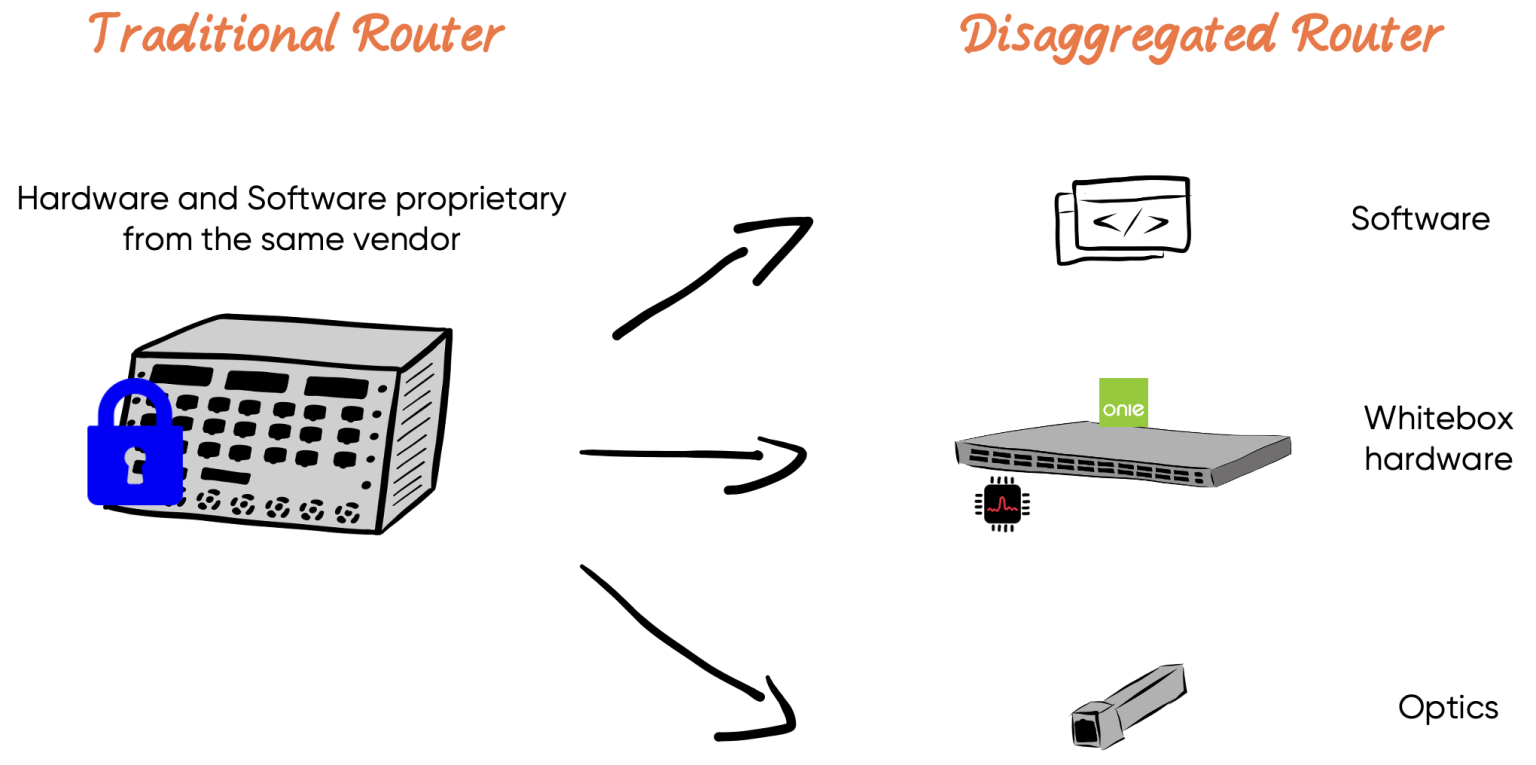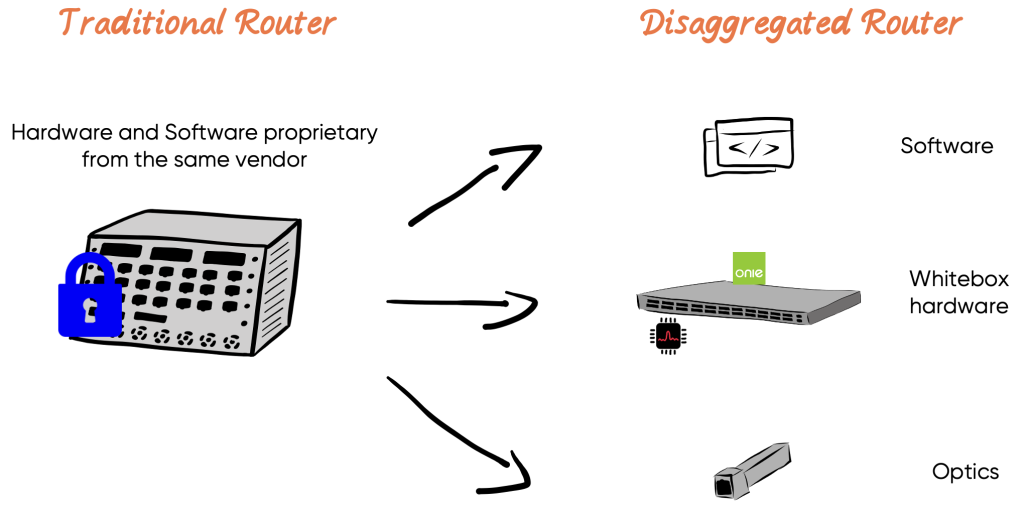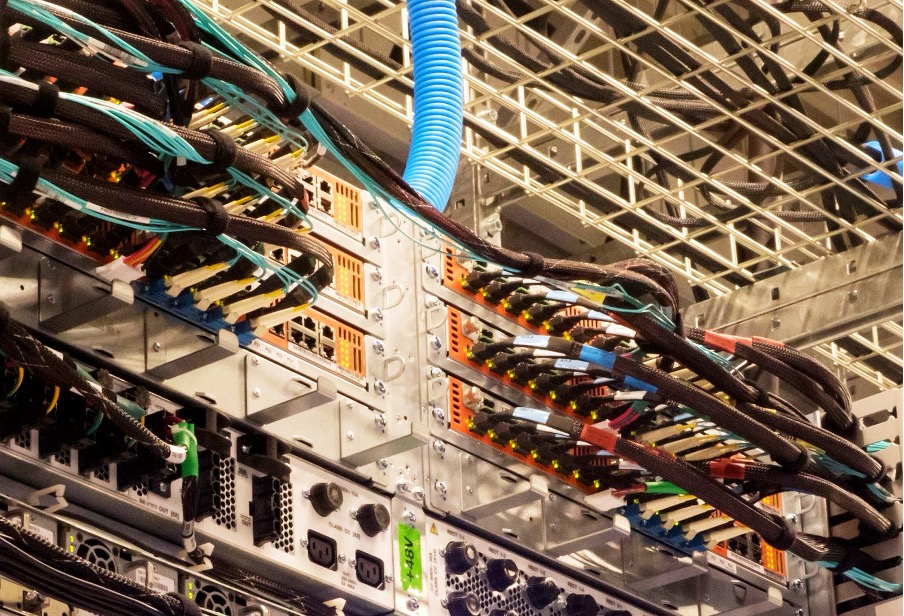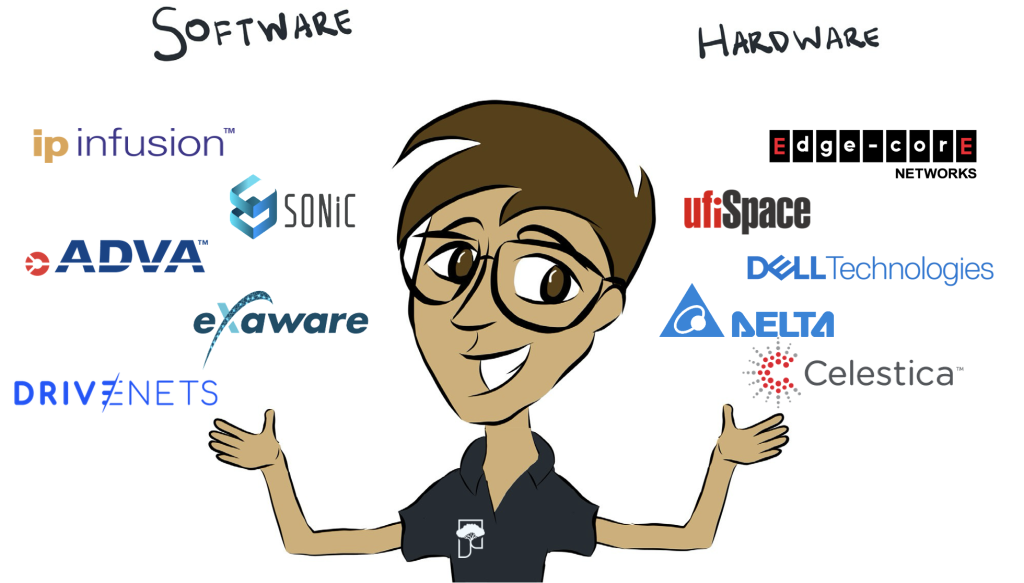
Generally, in the realm of technology and innovation, there are individuals who identify problems and devise solutions using different approaches. Then, there are the early adopters who embrace these solutions and reap the benefits early on. Subsequently, there are the followers who join the movement later. Open networking follows a similar pattern.
Open/disaggregated networking refers to the separation of hardware and software layers in a networking device, enabling network operators to choose hardware platforms and operating systems independently, without restriction to a single vendor. This approach offers enhanced flexibility and results in significant cost savings. Initially, a handful of key industry players spearheaded the implementation and popularization of open networking. However, could other players also derive substantial benefits from this approach

Lets first have a quick review of where and how disaggregation started and some of the major players in the industry using it in their production networks.
On April 17, 2012, Urs Hoelzle SVP Engineering at Google disclosed the deployment of OpenFlow in Google’s internal datacenter WAN network on an in-house built 128 x 10G chassis using merchant silicon. Google invested in developing their own software and hardware to resolve utilization and quality of service issues that they could not resolve at the time with their existing vendor hardware and software.
According to Amin Vahdat, the former academic who oversees Google’s networking technologies, Google started designing its own hardware in 2004 and by 2005 or 2006, it had deployed a version of this hardware in at least a handful of data centers.
Source https://www.wired.com/2012/04/going-with-the-flow-google/
Google not only designed “top-of-rack switches” it also created massive “cluster switches” that tied the wider network together. It built specialized “controller” software for running all this hardware. It even built its own routing protocol, dubbed Firehose, for efficiently moving data across the network. “We couldn’t buy the hardware we needed to build a network of the size and speed we needed to build,” Vahdat says. “It just didn’t exist.”
Probably this is one of the early example of network disaggregation before the term disaggregation has become known in the networking industry.
Source https://www.wired.com/2015/06/google-reveals-secret-gear-connects-online-empire/

In 2013, linkedin’s production engineering operations (peo) team faced high latency issues with applications in their data centers due to network infrastructure challenges. Commercial vendors controlled the features and bug fixes of network routers and switches, limiting control. To address this, they launched “project falco” to decouple network hardware and software.
The falco team developed their first network switch, named “pigeon, ” capable of 3.2tbps switching. Linkedin’s decision to create its switch was driven by the need for greater control and flexibility in the face of challenges like microbursts, lack of telemetry data, software bugs, unnecessary features, and high costs associated with commercial switches.
They desired a switch that could run their chosen merchant silicon on any hardware platform, enable automation, respond quickly to changes, and offer limitless programmability.
Linkedin has been observing the trend of hardware and software disaggregation in the networking industry, allowing content companies to purchase switches from original device manufacturers (odms) and customize software. They developed pigeon based on their architecture principles, which integrates with their existing infrastructure automation tools, telemetry, alerting, kafka, logging, and security.
The switch uses tomahawk 3.2tbps merchant silicon and is part of linkedin’s efforts to explore open networking solutions.
Microsoft Azure
Microsoft is another key player in network disaggregation. With hundreds of datacenters and tens of thousands of switches, microsoft needed to:
- Use best-of-breed switching hardware for the various tiers of the network.
- Deploy new features without impacting end users.
- Roll out updates securely and reliably across the fleet in hours instead of weeks.
- Utilize cloud-scale deep telemetry and fully automated failure mitigation.
- Enable software-defined networking software to easily control all hardware elements in the network using a unified structure to eliminate duplication and reduce failures.
So Microsoft pioneered Software for Open Networking in the Cloud (SONiC), a network operating system for whitebox hardware. Microsoft open-sourced this innovation to the community, making it available on sonic github repository. SONiC is a uniquely extensible platform, with a large and growing ecosystem of hardware and software partners, that offers multiple switching platforms and various software components.
Since then SONiC is in use by very well know companies such as ebay, alibaba cloud, microsoft azure itself and many more.
Orange
Service providers have also adopted open networking. In october 2022, orange one of the worlds leading telecommunications operators announced the delivery of the first disaggregated switch composed of edgecore hardware and orange network operating system based on SONiC open source community.
Orange made the decision to move towards open networking to allow for more flexible and cost-effective designs, faster deployments with a simpler it integration, and the ability to utilize a single operating system on networking equipment from different hardware vendors. Another objective was also to improve oranges network procurement lead times.
Jean luc vuillemin, executive vice president of orange international networks, said: “We are pleased to team up with edgecore to launch our network disaggregation transformation. This joint work enables us to drastically transform the way we build and upgrade our networks. It allows us to move away from off the shelf and locked-in solutions to in-house developed solutions relying on our network developers expertise. Upskilling our teams to master our software allows us to regain full control of our networks and therefore manage upgrades in a fast, cost-effective and sovereign way, while providing an improved and reliable service to our customers.”
Orange will use open networking products to deliver cutting-edge connectivity solutions for oranges hundreds of access points of presence (pop). These locations provide 1g, 10g, and 100g access services to enterprise customers. The chosen switches have a robust, high-performance design that offers the high-availability features required for telecom network pop deployment. Orange is installing its own sonic distribution to run on the switches. Orange relies on its developers expertise working in conjunction with edgecore and the sonic community, to which orange actively contributes, to develop their own networking software solutions.
Now lets go back to the initial question, is open networking for everyone?
Small and medium companies are not likely to build their own hardware and or develop their own software like Google, Microsoft and other hyperscalers did. However, small and medium companies can still benefit from the open / disaggregated model.
Today there are many hardware companies designing and manufacturing cost effective whitebox switches and routers based on merchant silicon. Network operators can choose from Edgecore Networks, Ufispace, Celestica, Delta and so on. On the software side, many network operating systems (NOS) are available and they support different types of hardware platforms and ASIC. Some available network operating systems are: SONiC, IP Infusion OcNOS, Arrcus ArcOS, Exaware ExaNOS, ADVA ensemble activator and many more.

Depending on ones requirements and development capabilities users can choose from open source software such as SONiC that offers them access to the source code in case they which to develop additional functionalities. However using SONiC doesn’t always mean one has to have development capabilities. SONiC offers an extensive set of available features and functionality covering datacenter and enterprise use cases.
Or users can choose a commercial NOS that comes with professional support and maintenance. With a commercial NOS users dont have access to the source code however all NOSes support standard APIs for configuration monitoring, automation and integration with a network orchestrator.
Some common APIs found on NOSes are:
- REST API
- NETCONF and YANG
- gRPC
- Open Config
Since the open networking model is different from the traditional model of purchasing a monolithic solution from a single vendor, one aspect small and medium operators/datacenters may worry about is the supply and support. A common question is: do we have to deal with different vendors for supply and support? Thats a very important question. The answer is no. Today many hardware vendors, software vendor and system integrators offer bundled solutions with a single point of contact for supply, hardware and software support.
In summary, open networking is not limited to hyperscalers with research and development capabilities. It’s rather leveling the field for everyone, from telecom operators to small ISPs and data centers. Each one of these actors can extract the benefits of this model. With a vast offering of whitebox hardware platforms and software, everyone can now harness the functionalities they need and optimize their operations, thus unlocking the potential for enhanced flexibility, cost savings, and innovation across their network.
